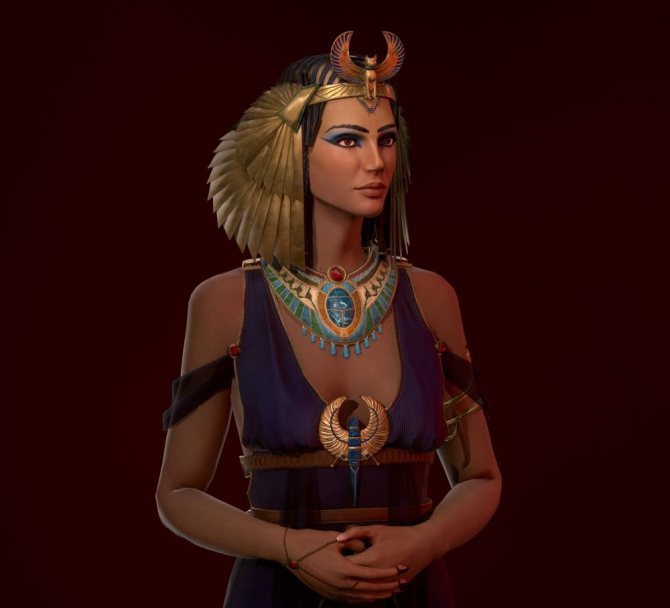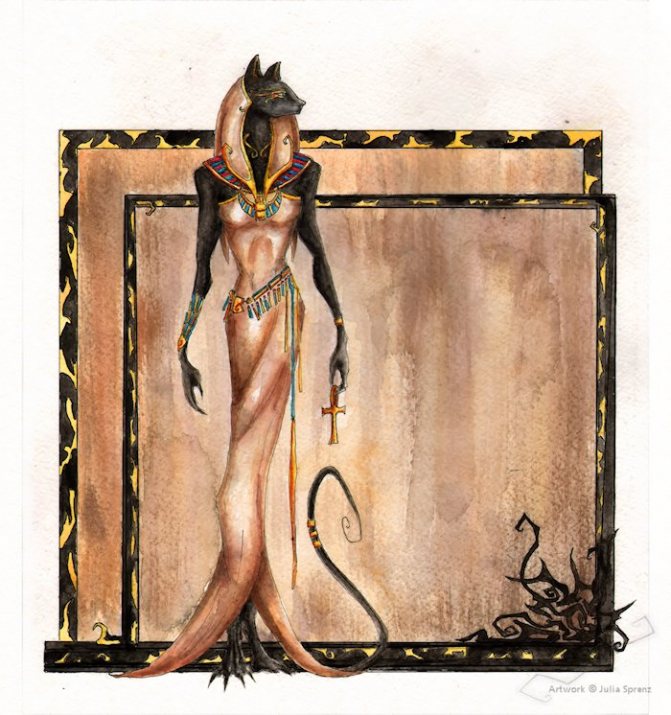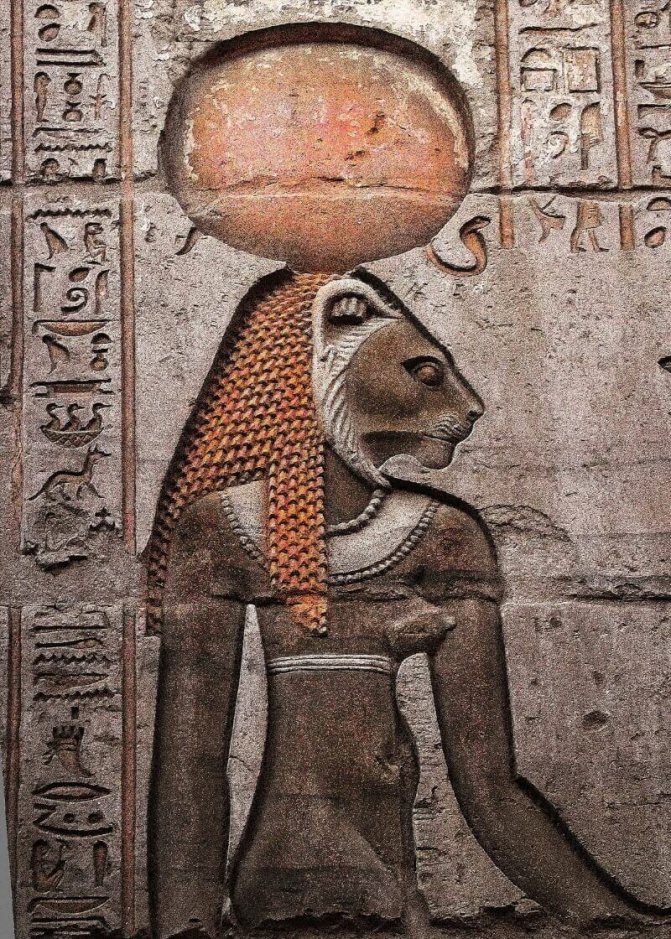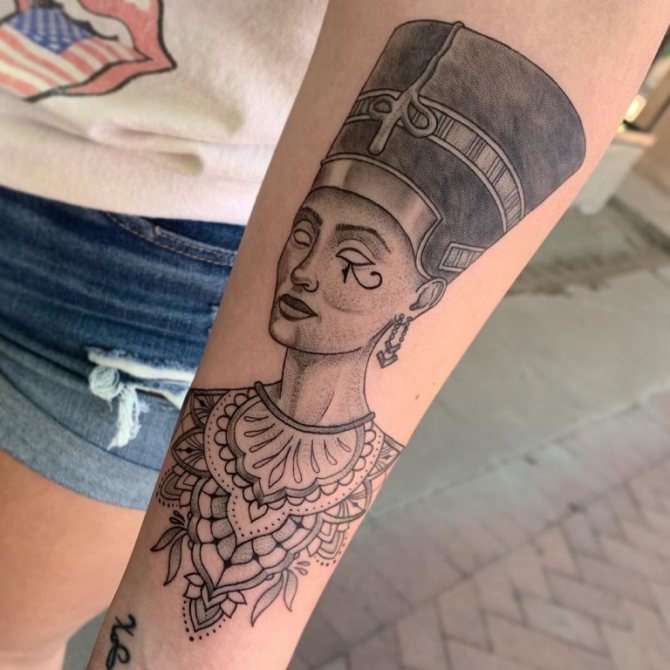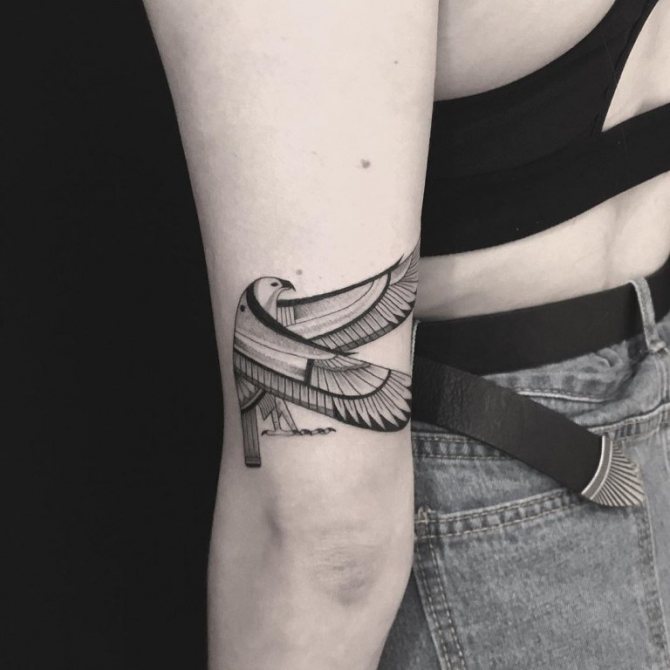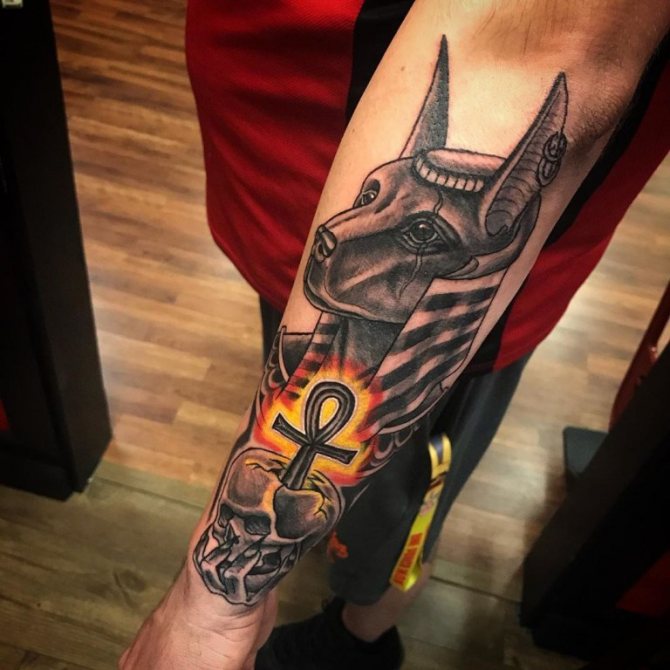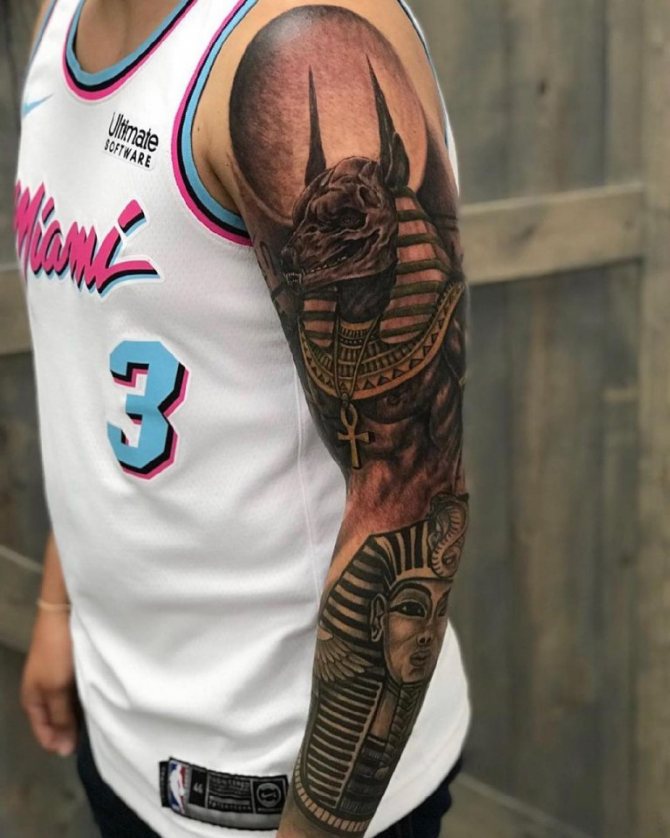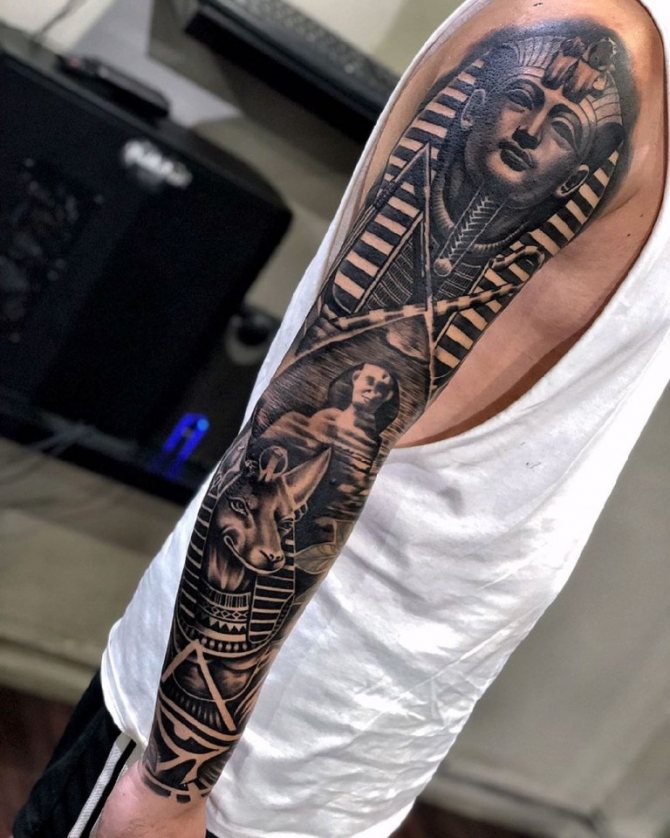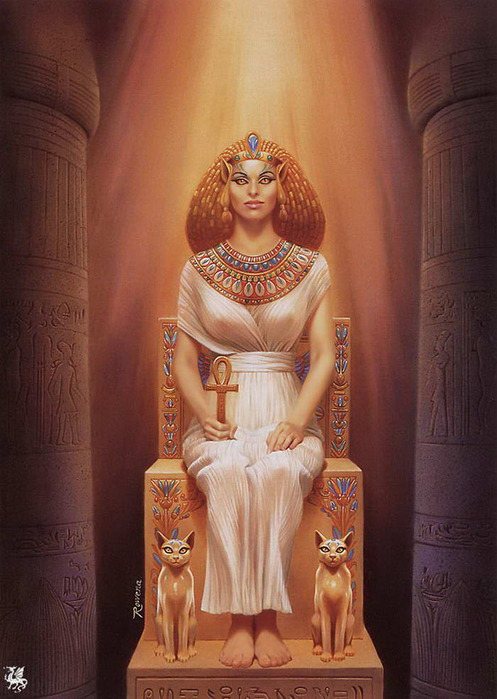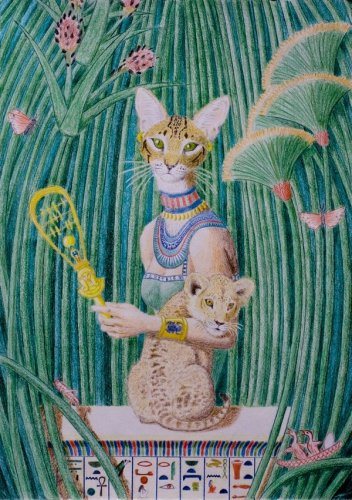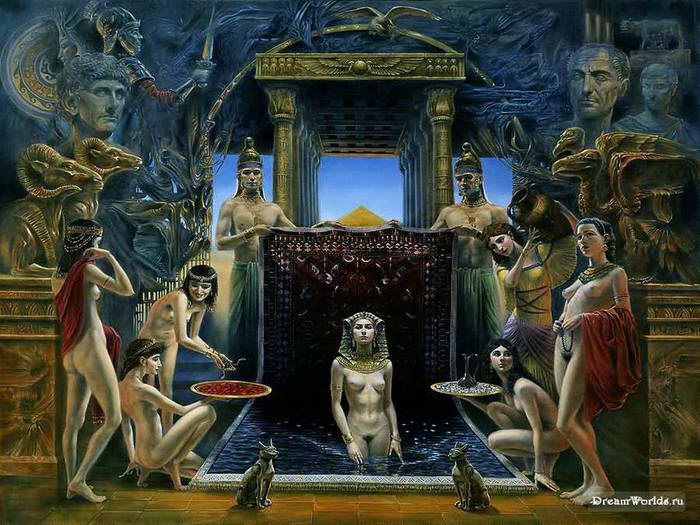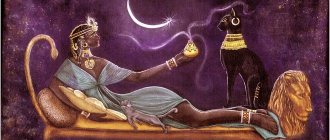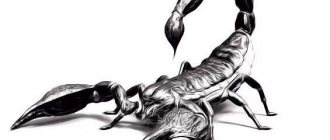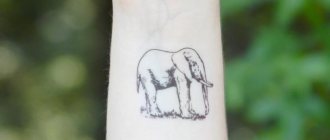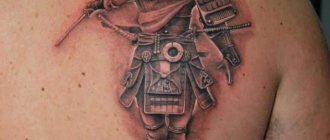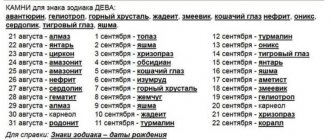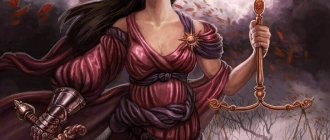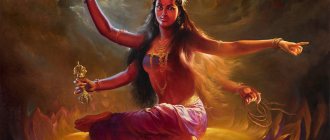Tattoos with mythical creatures, signs, gods from ancient pantheons can be seen quite often. What can be more symbolic than the image of an ancient deity?
Interest in the culture of ancient Egypt has not waned since the first discoveries were made in millennia-old tombs. Legends of deadly curses, the magical powers of the priests, the countless treasures hidden in the tombs of the pharaohs only strengthen this interest.
Today we will talk about the goddess Bastet, the tattoo of her image and its symbolism.
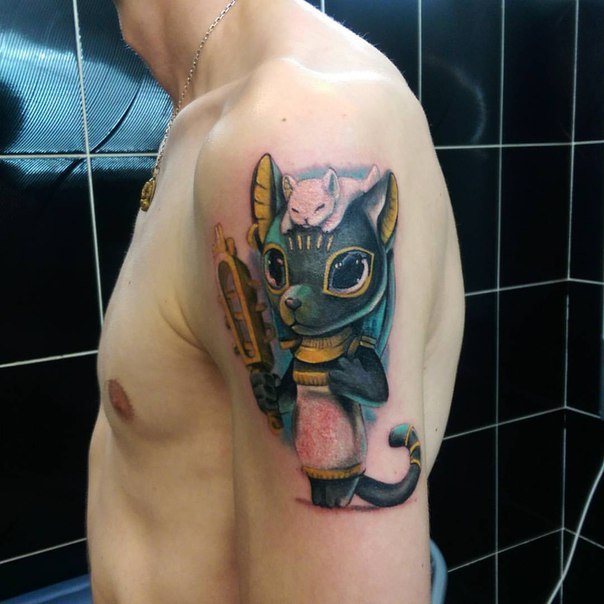
The appearance of Bastet in mythology
In fact, there is very little information about the appearance of Bastet in Egyptian mythology. It is reliably known that her father is the supreme god Ra, and her mother is the goddess Hathor. In fact, Bastet is the daughter of the sun and the moon at the same time. Nevertheless, Bastet was one of the most revered goddesses in ancient Egypt, and the popularity of her cult was not inferior to that of Amon-Ra. At least until the unification of Egypt and giving the cult of Amon-Ra the status of a state religion.
Anton
Ask a question
Question to an expert
Why are Bastet and Sekhmet considered the same character?
Before the unification of the country into a single entity, people in lower Egypt worshipped Ra's daughter, named Bast, and in Upper Egypt, worshipped Sekhmet. After the unification of the country, however, the cult of worship merged together, and with it, the images of the goddesses.
However, there is still disagreement about who Bastet actually was. She was believed to be the spiritual embodiment of the goddess Isis. But Bastet was in charge of many branches in Ancient Egypt. She was the goddess of joy, fun and love, the goddess of fertility. However, she was especially worshipped by women, because Bastet was also the goddess of the home, the goddess of female beauty and the goddess of childbirth.
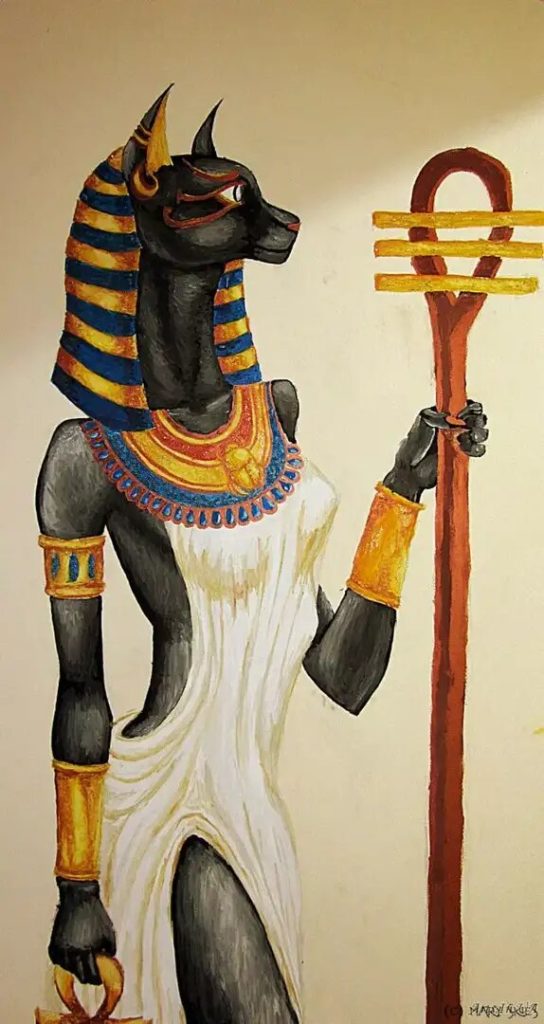

But historians agree that she was especially popular because she was the goddess of cats. Perhaps no one needs to be reminded of how sacred cats were in ancient Egypt. What to say, if a charioteer who accidentally ran over a cat was stoned to death. And it was strictly forbidden to take these animals out of the country.
Cats were considered sacred animals in Egypt long before the popularization of the cult of Bastet. Initially, cats were highly prized as fighters against snakes and mice. This may not be the main reason for the popularization of these animals, but it is certainly one of them.
Not surprisingly, Bastet was depicted as a creature with a human body and a cat's head. Moreover, she was portrayed completely in the body of a cat, but only in a sitting position. In the standing position, she remained half-human. It is noteworthy that Bast had a second, more formidable appearance. The ancient Egyptians thought that the lion was a symbol of power and protection. Therefore it is not surprising that the second, formidable and militant appearance of Bastet was Sekhmet, a creature with a female body and a lion's head.
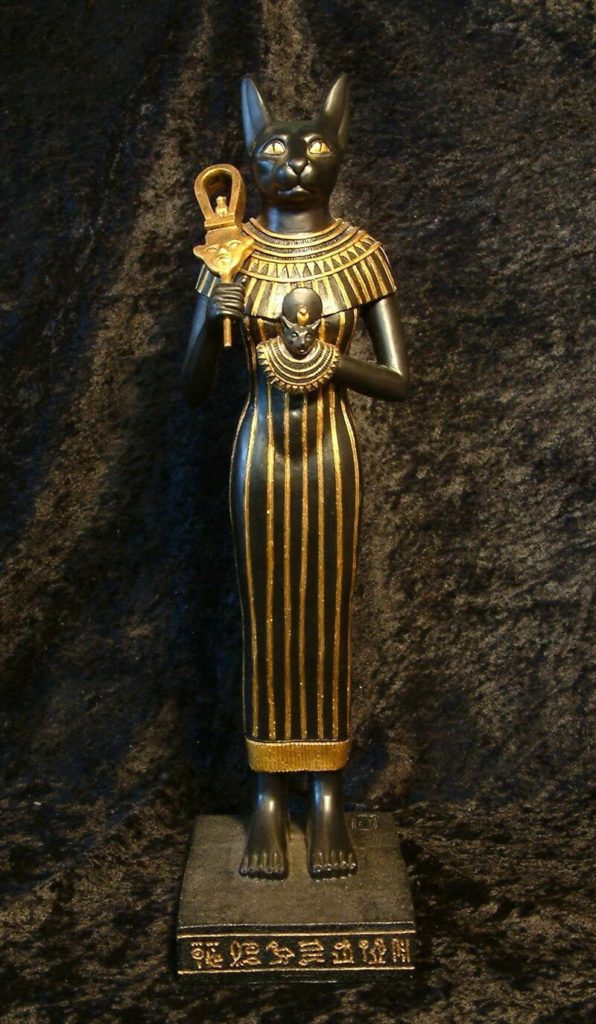

It is worth noting that Bast and Sekhmet were originally considered different characters. However, in times of fusion of Upper and Lower Egypt, the cult of goddesses was united. And even before that they were depicted quite identically, with the same attributes and symbols of power, as a result of which the cult of Bastet united the goddesses into two opposing entities of one whole. In addition, in late Egyptian times, Bastet also merged with Isis.
Despite the fact that almost all sources indicate that Bast liked black (as evidenced by her love for black cats, as well as their popularity in those times), the goddess preferred to dress in green robes. As always, in depictions of the time, the goddess' clothing was as revealing as possible.


How was Bastet portrayed?
Most often you can find her image in the form of a cat or an elegant woman with a cat's head. True, before the cat was domesticated, she looked like a lioness. The color of the goddess was black.
The main attribute of Bastet was a sistr - a percussion musical instrument, a symbol of fun and happiness. It is his goddess, as a rule, holds in his hands. The sistra itself was often decorated with images of cats. Four kittens were often drawn at the feet of the goddess and associated with fertility, prosperity and the protection of children.
Recommended on the subject
Anubis Isis the Sphinx
In addition to all her areas of responsibility, Bastet was sought after and adored not only by humans but also by the gods. It was she who was part of the guard of the supreme god Ra when he sailed in his boat across the sky, and at night in the underworld. In the guise of Sekhmet, Bastet was one of those who protected Ra from the serpent Apop, with whom the sun god faced every night in the underworld.
The goddess's attributes were an aegis, in one hand, and a sistrum in the other. Often Bastet was attributed a basket (a symbol of the harvest), as well as amulets with cats (which were incredibly popular in those ancient times). This spoke entirely of the character and meaning of the goddess. On the one hand - Bast had an easy temper, loved dancing and dances, fun and festivities, and on the other - she was relentless, if it was necessary to punish someone.
Because of Bastet's connection with the sun and the moon, she was considered to have incredibly powerful intuition, and even the gift of divination, which was used more than once by humans and gods alike. And the most interesting - the star Sirius was considered as the symbol of the goddess, around which a lot of mysteries connected with the pyramids and the Great Sphinx revolve.
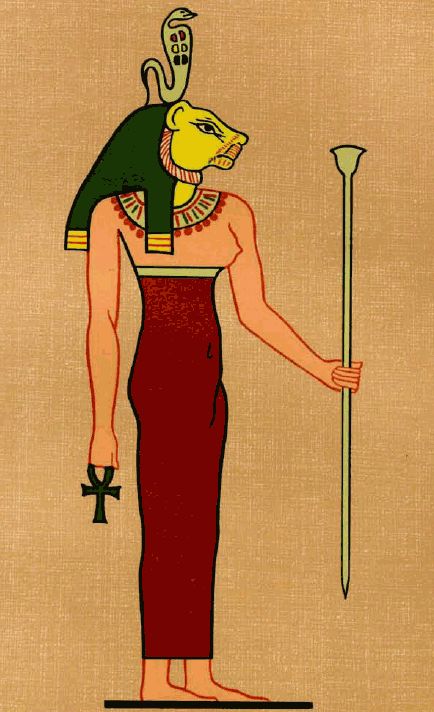

It is said that the sound of Sirius had amazing magical properties. It was able to heal people, bring back the meaning and purpose of life, was able to heal both the soul and the body. As we said earlier, very often Bast was depicted surrounded by 4 cats, symbolizing the areas of work of the goddess: fertility, female childbirth, patronage of marriage and motherhood.
What does the goddess Bastet patronize?
Since this Egyptian deity was portrayed as a cat, his main function was to protect these animals in the name of the power of all Egypt. It was on cats at that time that the preservation of the grain harvest, and therefore the fate of the Egyptians depended. Bastet is the goddess of love and fertility. She was worshipped not only to increase prosperity, but also to bring tranquility and peace to the family. Her patronage also extended to women. Women asked her to prolong their youth, preserve their beauty and bear children.
Bast is a symbol of youth and beauty
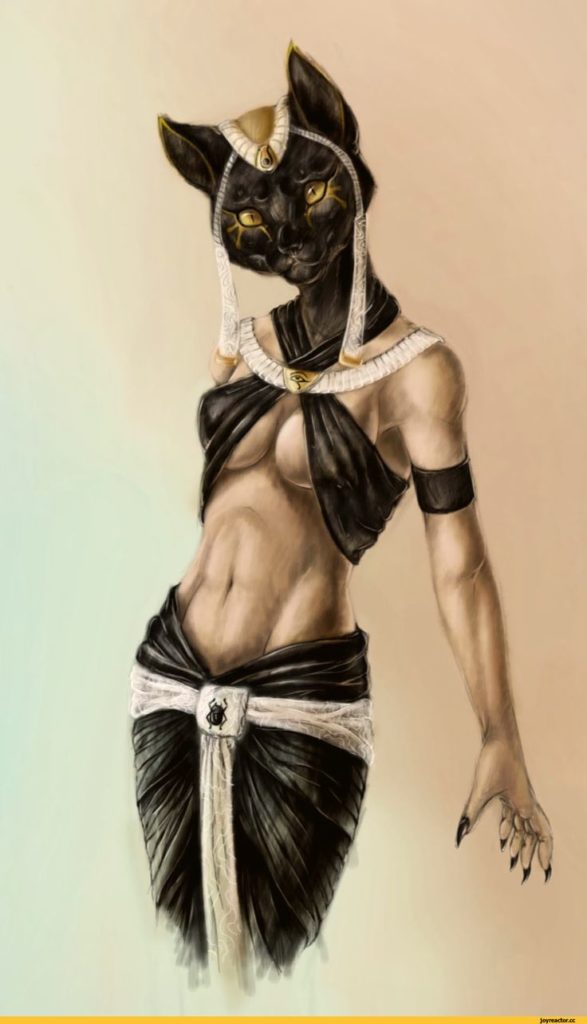

Legend has it that Bast received this feature from her mother, the goddess Hathor, who was responsible for love and beauty. However, in ancient Egypt it was believed that it was Bast who was worth asking for a stop to aging, rejuvenation and beauty, as she was much more affable and kind than her mother.
Women in those times believed that if you perform a set of certain exercises, then Bast for a time would move into their bodies, giving them incredible health, beauty, youthfulness and gracefulness. However, while doing the exercises, one had to think of Bast all the time in order to summon her.
The cult of the goddess: the heyday
Bastet became especially revered during the prosperity of the Middle Kingdom, when the ancient inhabitants of Egypt finally learned to grow grain and thought of storing it to avoid starvation. It is not difficult to guess why at that time, special attention was paid to the goddess Bastet.
This is because the main enemy of this grain is mice, and the goddess is a cat. At the same time, this deity began to be associated with the wealth of the country and worshipped everywhere. The center of worship of the goddess was the city of Bubastis, which was located in Lower Egypt. It was there that the largest and most important temple of Bastet was built, which was enclosed by a large mural and decorated with beautiful bas-reliefs. In the middle of the temple was its biggest statue, to which a great number of pilgrims came every day, bringing small statuettes of cats as gifts, hoping for her goodwill and kindness.
It is worth mentioning that a great number of cats lived in the temple, and there was a sacred cemetery of these animals at its foot. Like the pharaohs learned to mummify the cats, they were placed in specially prepared for them sarcophagi and buried with all honors. Today, the temple is destroyed, leaving only ruins. But all who have been to Bubastis say that even from its ruins reeks of strength and former majesty and beauty.
Bast, as Sekhmet.
Help from Ra.
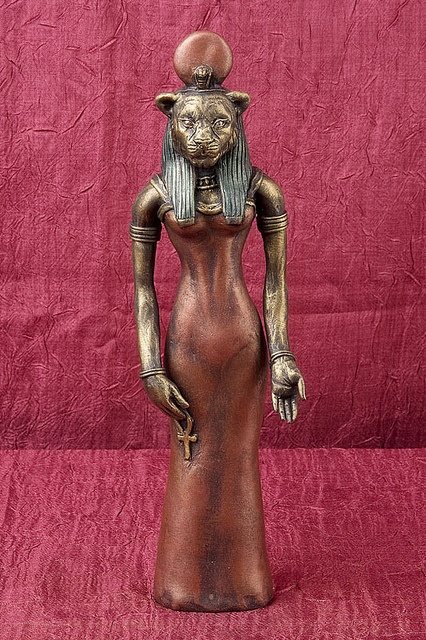

Bast didn't try on her cruel appearance very often. However, if it happened, Bastet severely punished the guilty. It is true that she preferred to do so in the form of Sekhmet. The revenge of the goddess was relentless. Nothing could stop her, as you will learn in the following story.
A long time ago, the god Ra came down to Earth to teach people how to live properly and wisely. However, as is always the case with humans, their greed and avarice exceeded every conceivable and unthinkable measure. Gradually, people began to ignore the instructions of Ra, and then - and completely forgot about them, and stopped obeying the laws of the supreme god. According to another legend, the people decided to overthrow Ra.
Question for the expert
Why did not Bastet stop the bloodshed, when Ra came to his senses and ordered her to stop exterminating the people?
The myths are silent on the true reason, but assuming that Gore made a remark to the goddess about intemperance and she accepted the rebuke, it is most logical to assume that Sekhmet was intoxicated with blood and simply could not stop.
In a rage, Ra sought the advice of Noon, who had no better idea than to exterminate the human race. Ra listened to the advice, and sent his formidable weapon, the Eye of Ra, upon mankind, which he gave to Sekhmet so that she would be the one to make the punishment a reality. Bastet's formidable incarnation was relentless. According to legend, the weapon in her hands brought so many terrible deaths that people were drowning in their own blood.
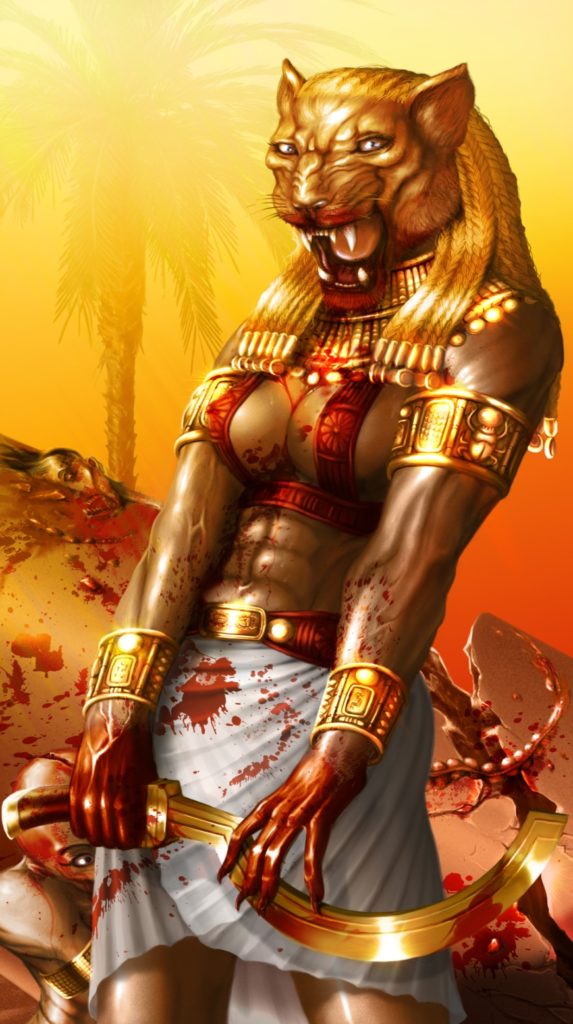

It was the same Ra who stopped Sekhmet. The next day he saw the consequences of his order and took pity. But Séchemet was relentless. The only way to stop her was to deceive her by giving her a thousand pitchers of beer dyed red. The goddess mistook it for blood and became intoxicated, after which she fell asleep. After that Ra left the people, but that is another story.
As for the goddess herself, the gods took her asleep, and then managed to tame her, so that she would take her good form and change her anger for mercy. Legend has it that it took a very long time to persuade and calm the goddess.
Opposition to Anubis
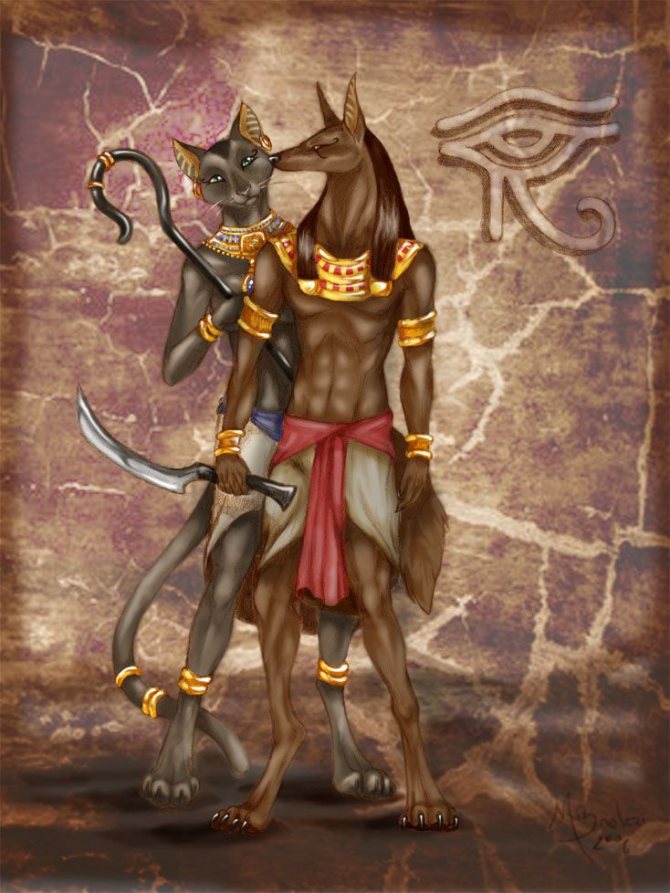

The second known case of reincarnation of Bastet into Sekhmet happened because of another god, Anubis. According to legend, one day they had a quarrel, and Anubis, possessing the head of a jackal, growled at Bast so menacingly that she became frightened, after which she became enraged and turned into a female lion. Unfortunately, the legend is silent about the ending of this story, but we can assume that Anubis and Bastet were separated by other gods, for both deities were quite popular, and about equal in power.
The Legend of the Butterfly
To understand the character of Bastet, one need only read the following myth. Legend has it that one day Bastet was resting near a fire made in her chambers. At that moment, a butterfly flew into her chambers and began to "play" with the fire.
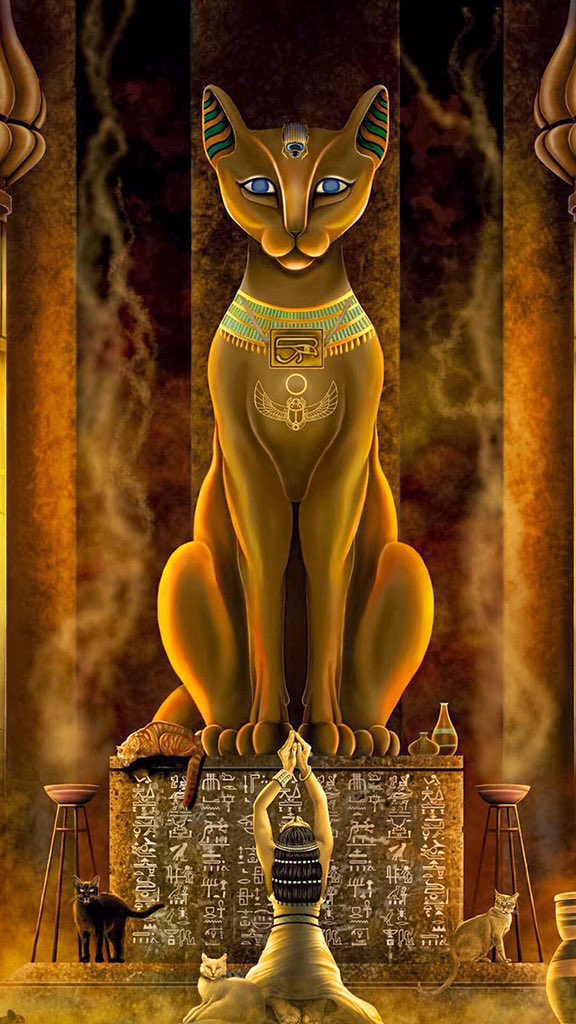

This excited the goddess, and she, in all her guises, began to chase the butterfly. However, the butterfly was cunning, or she just liked circling the fire. As a result, Bastet was badly burned several times by the flames.
The sage god Horus came to the goddess' rescue. He refused to kill the butterfly, after which he made Bastet think about her own character. As a result, the goddess concluded that she needed to learn peace and self-control.
Meaning of the Egyptian Cat tattoo
Sekhmet


Bastet
An Egyptian cat tattoo is a tattoo done, usually in some very elegant and understated style, with a minimal amount of color.
Egyptian cats are regal animals, divine, you can see the breed in them. They are believed to be the ones that represent Bastet on earth. Therefore, a tattoo with this cat would signify:
- Aristocracy in spirit;
- power and strength;
- mesmerizing grace.
Interesting facts about Bastet
The Egyptians worshipped cats almost until their conquest, in the 4th century BC. At that time, the Egyptians were forcibly inculcated with Christianity. As a result, almost all ancient deities were forgotten, including Bastet, and cats, especially black cats, began to be exterminated en masse. By the way, the belief about black cats came exactly from ancient Egypt, and many believe in the omen to this day.
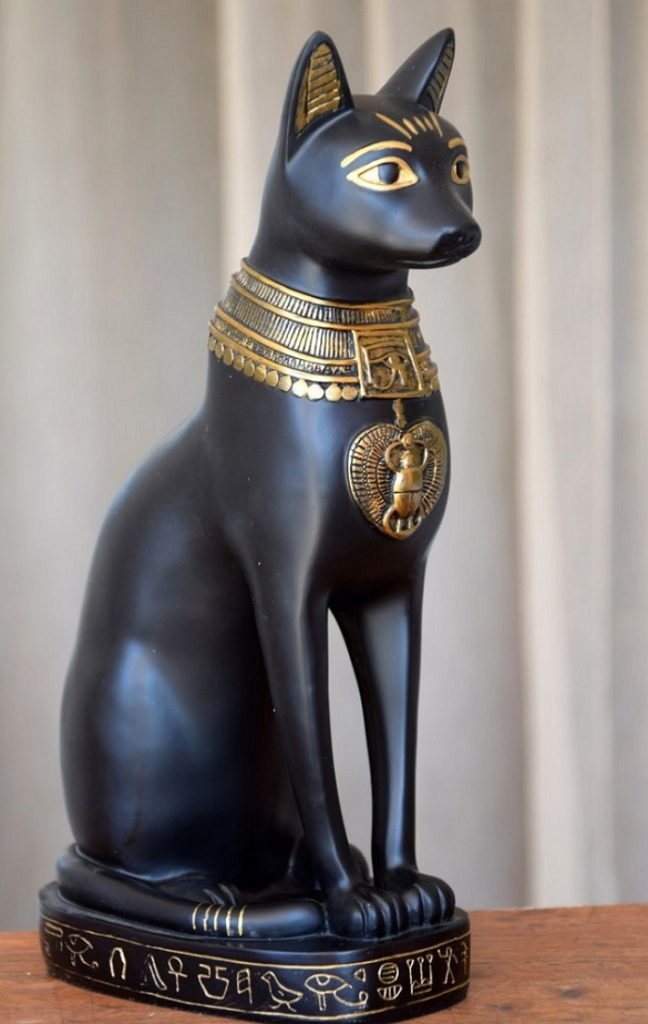

- 7 - Exactly how many times a year were held festivals in honor of Bastet. However, the most magnificent holiday fell somewhere in the middle of April. Legends and stories associated with this holiday have reached us. The same Herodotus told how women and men sailed on ships on the Nile and docked near some city.
Some sang songs, some drank wine, and some indulged in debauchery. Legend has it that many of the girls, when they sailed up to the cities, would lift up the hem of their tunics to attract the men. It was believed that if a child was born on the day of the feast, he would be a demigod, because Bastet would patronize him. From half a million people participated in such events.
- Throughout ancient Egypt there were temples and sanctuaries dedicated to Bastet. It is noteworthy that this temple must have had cats and priests who watched over them. It was believed that through the cats Bastet passes his dictates to people.
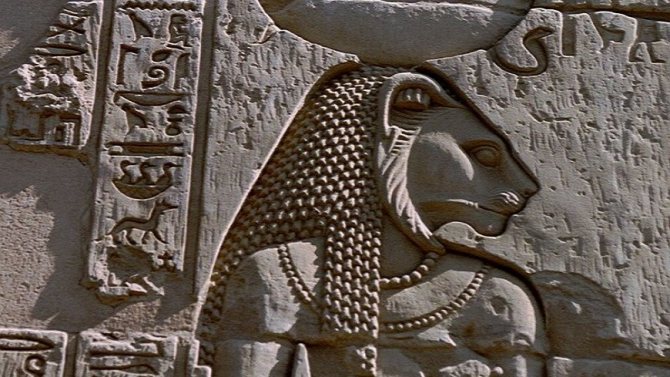

Tips for those who want to get a tattoo in the style of Ancient Egypt
- Choose which style you prefer: an exact copying of ancient images or a more creative approach. For example, you can make the Egyptian gods stylized as cartoon characters or realistic.
- If you decide to depict hieroglyphs, make sure that you know exactly the meaning of the chosen symbols. Consult reliable sources - books on the history of Ancient Egypt.
- Sketches where ancient deities are remade through the attributes of our time look interesting - Bast may wear a respirator, and Gor may be depicted with a gun atop.
- Make sure that your master has already worked with sketches based on Ancient Egypt, is well versed in the symbolism and loves this theme.
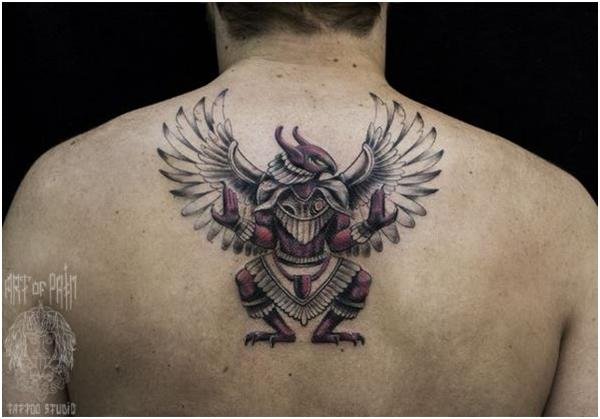

Recommended on the topic
How myths originate in the mythology of Mielnir Vanaheim
- In ancient Egypt, Bast played the role of the goddess of fertility. Ordinary people, to propitiate the goddess, every spring took out statuettes of black cats from the houses to attract the attention of the goddess, so that she will bring more crops. At the time of the popularization of the cult of Bast, at the state level there was a ritual in which a huge statue of a black cat was carried along the Nile to protect people from the flood of the river.
- One of the most developed centers of the time was the city of Heliopolis. And there the role of the goddess Bast was no less popular and in demand than that of Ra himself. A statue of the goddess was erected that was astonishing for its time, depicting the goddess as a half-man half-cat. But its peculiarity was that depending on the angle of the sun, the statue's pupils widened and narrowed, just like a real animal.
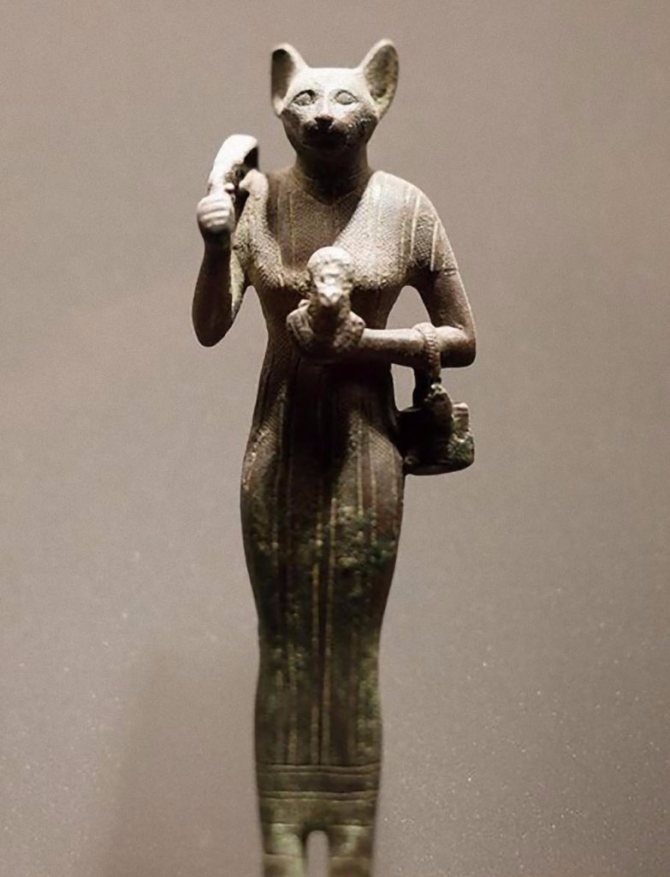

- Cats in ancient Egypt were so popular animals that when their pet died, the owners shaved off their eyebrows as a sign of mourning, and the animal itself was mummified and buried with honors, which not everyone was worthy of.
- The fashion for the famous arrows, under the eyes of women, went right from the time of ancient Egypt. It was believed that in this way, women emphasize their resemblance to the goddess.
- Bastet is one of the few goddesses to whom a separate city, Bubastis, was dedicated. There the significance of the cult, reached unprecedented heights, as well as the level of worship of cats. And no wonder, because Bubastis was one of the key cities of ancient Egypt.
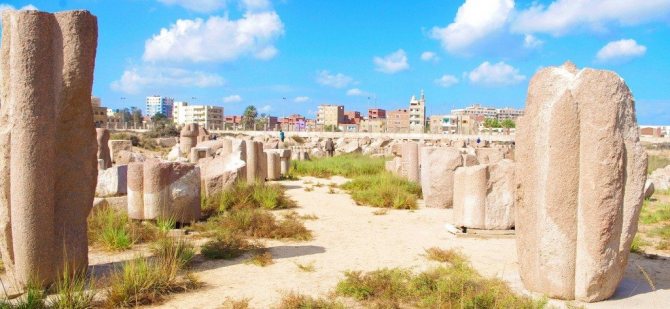

- The significance of cats, in ancient Egypt, was not only cultic. Cats saved crops from pests (rodents and snakes). This may be one of the reasons why the animal became more than sacred.
As you can see, Bast was one of the most revered and significant goddesses in ancient Egypt. Considering the directions for which she was responsible, this is not the least bit surprising. Nevertheless, her history, despite its openness, also raises many questions, as in all things Egyptian.
LiveInternetLiveInternet
Quote of the post Catgirl_Bastet
Read the whole thing on your quote or community!
The cult of the cat in ancient Egypt. Goddess Bastet.
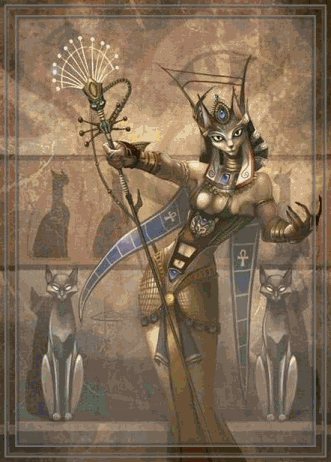

"O wondrous cat, bestowed forever." The inscription on the obelisk at Nebra, Ancient Egypt.
The Egyptians throughout their history have treated animals with reverent awe, venerating some of them as shrines. In ancient Egypt, cats were at the top of the hierarchy of such shrines.
Nowhere was the cat more revered than in Egypt. The complex metaphorical meaning with which the world mythology has endowed the image of this beautiful intelligent animal was reduced by the Egyptians to positive, pleasant for human consciousness concepts - such as goodness, hearth, joy, love, motherhood, fertility, protective powers.
In ancient Egypt there was a very significant cult of the goddess - cat Bastet (Bast), who was also considered a personification of the sun and moonlight. The goddess was depicted as a maiden with a cat's head or as a lioness. Bastet was considered the daughter of Osiris and Isis.
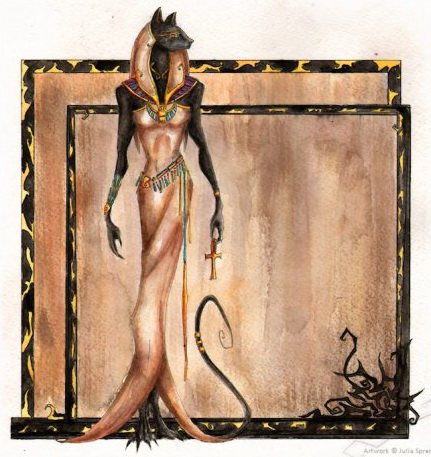

Prayers were dedicated to this goddess: "She can grant life and strength, all health and joy of the heart" or "I am the cat, the mother of life. In her honor, cats were worshipped and mummified, and a mouse was placed beside them so that they would have something to entertain and eat in the afterlife.
The cult of the cat appeared in the most ancient period of Egyptian history (the second dynasty) and lasted until the 1st century BC. The religious center of worship was the city of Bubastis, where, according to the Greek historian Herodotus, there was the most beautiful temple in Egypt dedicated to Bastet. In the main sanctuary rose a huge statue of the goddess.
|
|
Statue of the goddess Bastet (Bast) in the temple of Bubastis
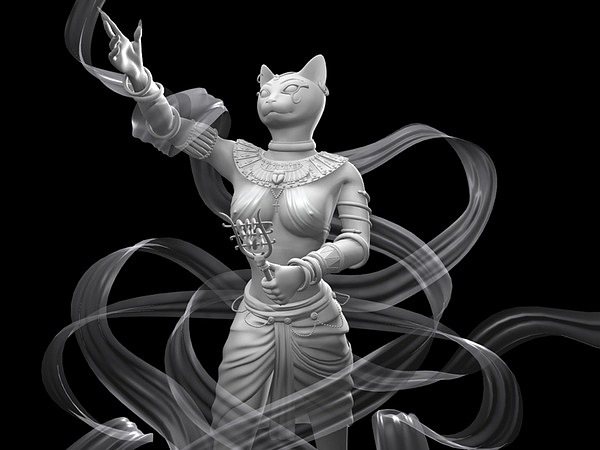

The great historians of antiquity Herodotus and Diodorus wrote in their works how each year, seven times a year, a hundred thousand priests gathered in the temple in Bubastis for a great commemoration of the divine cat. During the annual spring festivals the statue was taken out of the temple and solemnly conveyed in a boat along the banks of the Nile. It was there that these sacred animals were bred, and it is there that a large number of cat mummies have survived.
Bast (Bastet).
Cat goddess. Goddess of the sun, joy and gladness. She embodied warmth. She was considered to be omniscient and was the guardian of the sun god Ra. She embodied feminine and maternal qualities:


grace, beauty and tenderness...
The goddess was often depicted as a woman with a cat's head, with a musical instrument - sistrum in her right hand and a mirror in her left, and four kittens at her feet.
This is how the Egyptians personified the goddess of fertility.
Bastet (Bast), as a rule, on the images was dressed in green. Traditionally, she was associated with the sun, fertility and prosperous female childbirth. The goddess of fertility was elevated by the Egyptians to the rank of a national deity.
Bast was the goddess of fire, the moon, procreation, fertility, pleasure, benevolence, fun, sexual rituals, music, dance, protection from disease and evil spirits, intuition, healing, marriage and all animals (especially cats).
|
|
Bast has two incarnations - a woman with a cat's head (good essence) and a lion's head (aggressive).
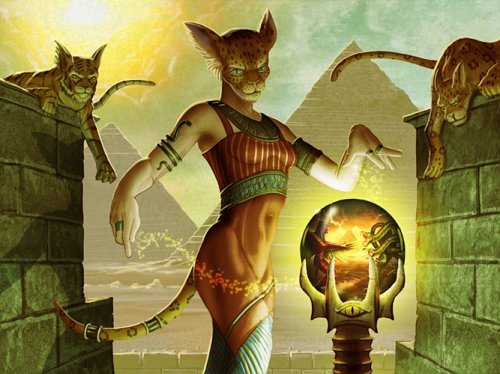

According to other sources in Egypt, the cat was associated with both Bast and Pasht (the moon). Pasht was the dark aspect of Bast, the Lady of the East, the mother of all cats, the wife of the god Ptah. Although she was considered the embodiment of the life-giving energy and gentle warmth of the Sun, through her sacred cats she was also associated with the Moon.
Bast was also the patroness of children and guardian of the harvest. Her statuettes were kept in homes to ward off evil spirits.
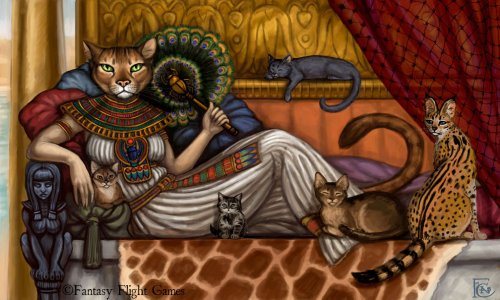

The beginnings of the cult
Bastet
- Second Dynasty. Worshiped until the first century A.D.
Genealogy :
Daughter and wife of the sun god Ra, wife of Ptah, mother of Mahesh and Hensu.
Iconography:
Depicted as a woman with a cat's head.
Attribute
Musical instrument of the sistrum.
Sacred animal.
- A cat, reflecting the nimbleness and strength of the goddess.
The sacred cats of Bast herself were cats of the black suit; the image of the black cat was placed on their houses by Egyptian doctors as a symbol of their profession. The image of the cat adorned the sistrum and sometimes the mirror of Hathor. This animal represented the moon.
This cat represented divinity, inaccessible to mere mortals. Even the supreme sun god Ra was called the "great cat". The influence of light on the size of the cat's pupil was associated by the ancient Egyptians with the movement of the solar god in a chariot on the heavenly rivers. And the cat's eyes burning in the darkness, according to the beliefs of the Egyptians, emit daylight - the light of the fiery chariot.
The first hieroglyphs used for the words "cat" and "cat" date back to the fifth and sixth dynasties of the Egyptian pharaohs (around 2300 BC). Today they are transcribed as "mint" and "miu. The transcription of the hieroglyphs "miw" for masculine and "miwt" for feminine (in Russian there is a similar onomatopoeia in the verb "meow").
|
In the same way, we have numerous drawings and statuettes depicting cats. The rising sun was represented by the scarab beetle, which was necessarily present on the chest of the animals.
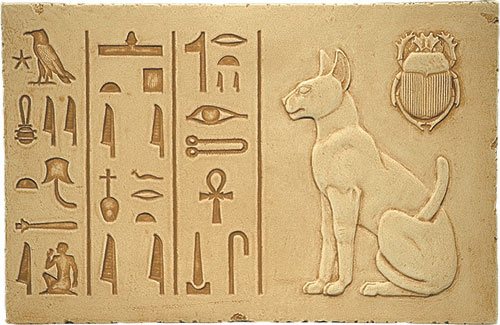

In the heliopolis sanctuary the symbol of the supreme god was a statue of a cat of gigantic size, whose pupils changed depending on the direction of the sun's rays. The statue, which released a stream of water every hour, also served to tell the time. Legend has it that the statue of the cat represented an animal that died in a fight with the evil serpent Apop.
Presumably, domestication of the cat occurred in Egypt during the III millennium B.C. Before becoming a pet valued for its gentleness, gracefulness and carelessness, the cat became primarily a protective animal. Hunting small rodents, they guarded the barns where the Egyptians stored their provisions (primarily wheat), vital to this agricultural people.
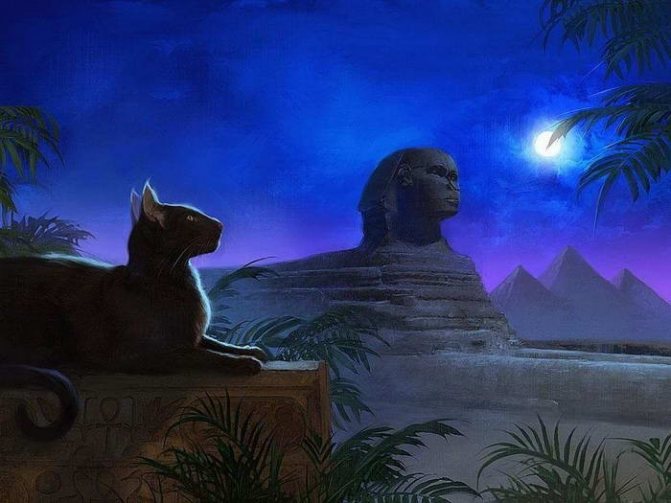

By hunting rats, cats eliminated the source of serious diseases (such as the plague). Finally, by hunting snakes (usually horned vipers) they made the surrounding countryside safer.
At the beginning of the historical period called the Middle Kingdom, Egypt grew into a mighty power. The backbone of this power was the granaries of grain. As long as they were full, the country could safely survive a possible Nile flood. This was the cat's finest hour as a rodent exterminator.
The cat's practical importance in ancient Egypt was so great that it was during this period that the cat began to be considered a sacred animal. The Egyptians deified cats, seeing in them the creatures that could embody the images of specific gods. The great sun god Ra, who defeated Apop, the serpent of darkness, took the form of a giant cat. Sometimes Ra was called the Great Cat. His duel with the serpent of darkness was depicted by artists as follows: with one paw the cat pressed the serpent's head, and in the other he held a knife.
But the true goddess of cats was the lion-headed Bastet.The Egyptians considered the cat to be the sacred animal of the goddess Bastet, personifying joy, fun, health and love of life. Here is what the famous philosopher E.P. Blavatsky (1831-1891) wrote about the attitude of the Egyptians towards the cult of the cat in his book "The Evolution of Symbolism": "They noticed the simple fact that the cat could see in the dark and that its pupils became perfectly round and especially luminous at night.
The moon was the beholder in the night sky, and the cat was its equivalent on earth.... And from this it followed that the sun, which looked down into the underworld during the night, could also be called a cat, as it was, for it too saw in the darkness. The cat was called in Egyptian "mau," which means sighted, from the verb mau - to see.... The moon as a cat was the eye of the sun, for it reflects sunlight and because the eye displays the image in its mirror."
The cat cult reached its heyday during the 12th and 13th dynasties of the Egyptian pharaohs (about 1800 BC). The temple of the goddess Bastet in the eastern part of the Nile delta - became a place of pilgrimage. The main center of the Egyptians was a huge necropolis near the temple. Here they buried embalmed dead cats, placing them in decorated sarcophagi along with toys and food (such as mummified mice) for the long journey to the afterlife. Near Beni-Hasan, 180,000 cat mummies were discovered. As a sign of mourning, people who mourned cats shaved their eyebrows.
|
|
Egyptians from all parts of the kingdom offered the goddess symbols of devotion in the form of small feline figurines made of ceramics and bronze. The bronze cat figurines are characterized by the finest surface modelling.
Soft contours emphasize plasticity of the body, graceful silhouette. Masterfully conveyed the naturalness and gracefulness of the animal...
The statuettes, made with love, are exquisite and at the same time restrainedly detached, even austere... as if to remind everyone that Bastet is the merciful incarnation of the formidable lion-headed goddess Sokhmet, daughter of the sun god Ra, who maintains Maat - universal harmony - and punishes those who violate it.
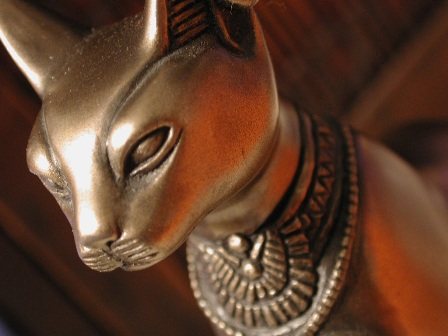

Cat figurines were usually richly decorated by Egyptians. The Hermitage statuettes have necklaces around the neck, scarabs on the vertex and eyes inlaid with gold.
A study of mummies from cat tombs in Bubastit, Siut and Beni-Hassan showed that cats of the Middle Kingdom underwent selection (artificial selection): the skeleton, teeth and hair pigmentation were already significantly different from those of the primordial steppe cat.
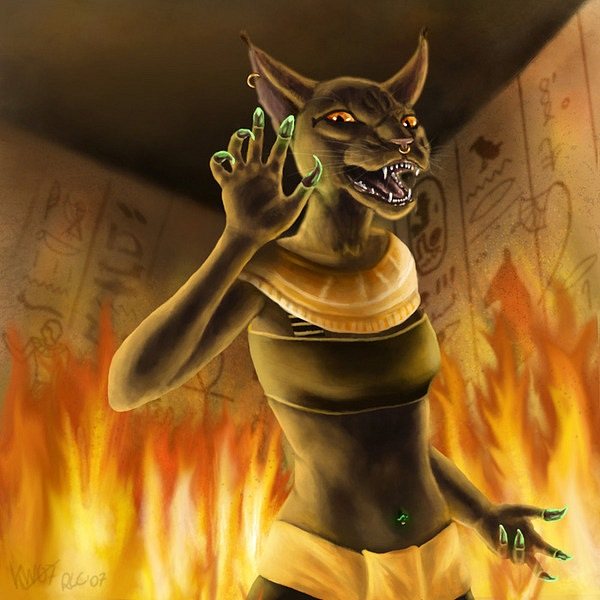

Egyptian cats were deified. Luxurious temples were built for them, their bodies were mummified and thousands of pilgrims from all over the country flocked to them.
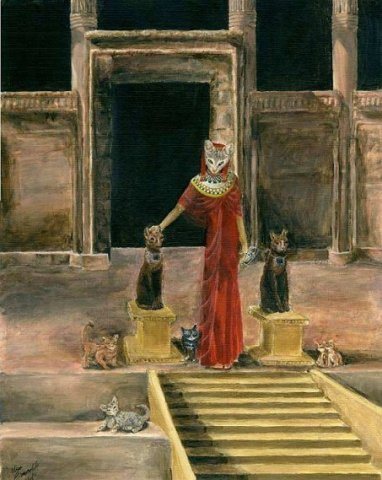

For centuries, Egyptian cats have been surrounded by a mystical halo. Their eyes were considered windows to another world, and because of their fickleness, animals were often compared to the sun.
Egyptian priests found many analogies between the nature of the cat and the sun. First and foremost were the eyes of the Cat.
As the sun rises, the pupils of the cat's eyes become smaller. As the sun approaches evening, the cat's eyes widen.
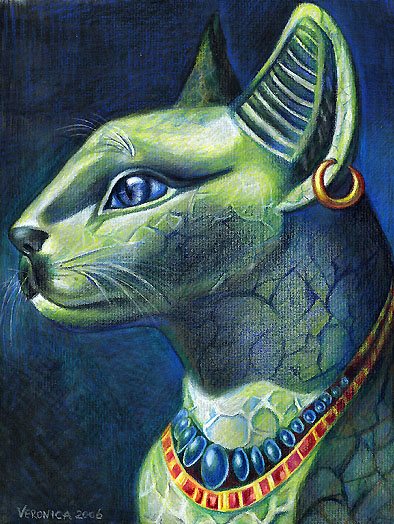

When the Sun has disappeared, the cat looks at the world with wide pupils, round and glowing. A cat's eyes are two diminutive suns. A cat's eyes are magical windows into other worlds, in which one can see a great deal.
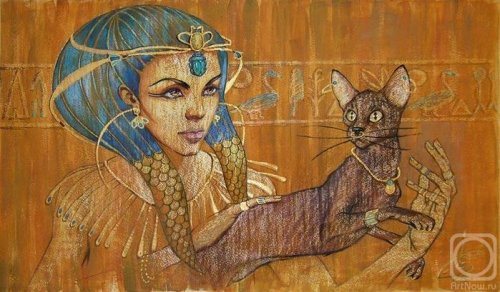

Cats are guests of the world of the dead in our, manifested world.
It is believed that no vampire or other dark entity will ever set foot in a house where cats live. The fact is that cats see them...
Often you can see the "strange" behavior of a cat, when she suddenly freezes and stares intently at some point. This is how it communicates with the world invisible to us.
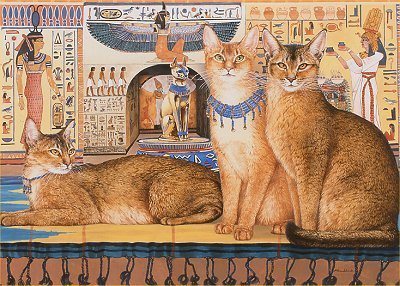

In Bubastis, the main center of the cult of Bast in Lower Egypt, sacred cats lived in the temple courtyard. It was considered a special honor to take care of them, and this right was passed from son to father.
In order to take care of the welfare of the cats living in the temple, a caste of priests was organized. The servants of Bastet occupied the highest state posts. A priest accused of unacceptable treatment of sacred cats was severely punished.
The priests watched the cats closely, taking care not to miss the slightest sign they gave... a message from the goddess Bast to interpret the message later.
The worshipper, seeking help from the goddess or wishing to take a vow, shaved part of his child's head and took the hair cut to the temple. The hair was placed on a scale and balanced with silver. The worshipper would then give the silver to the caretaker of the sacred cats, who would cut off the appropriate portion from the fish that served as their food and give it to the cats.
In the families of ordinary Egyptians, cats were also revered as sacred and were surrounded by care and attention.


Egyptians loved their domestic cats, which were depicted lying on their master's lap or under his seat. Plutarch describes how the Egyptians took great care in breeding cats, selecting pairs that matched their characters.
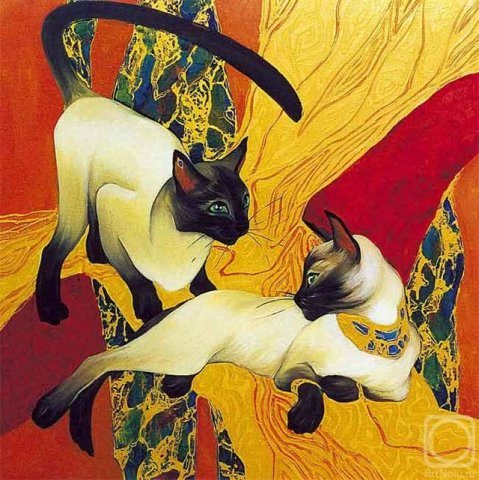

Sacred cats were fed milk with bread, and fish without scales were bred specifically for them in tanks. Whoever attempted to harm the life of a cat was severely punished. A cat was protected by law and whoever dared to raise his hand at it, faced the death penalty.
Cats were called the "good spirits of the dwelling". People everywhere gave way to these graceful animals. Cats in Egypt were the first to be carried out of houses in case of fire, and their owners saved them, often risking their own lives in the process.


If a cat died, its funeral was held with great honors.
After death, cats were buried according to a ritual reminiscent of human burial: the cat's owners and their relatives shaved their eyebrows as a sign of mourning, and the cat's body was embalmed. The Egyptians believed that the soul of the mistress of the house after death moved into the cat.
The body of the dead cat was wrapped in a linen cloth, anointed with herbs and mummified with balsam. To prevent the cats from starving in the afterlife, mummified mice and shrews were placed in the sarcophagus with them. The cats of the rich were wrapped in colored linen cloth with intricate patterns. A mask with ears made of palm leaf stalks was placed on its face. The mummy was placed in a wooden or woven straw box, sometimes decorated with gold, crystal or obsidian. Even kittens were buried in small bronze coffins.
The most revered cats were those that lived in temples. Their funerals were sometimes so pompous and expensive that special duties were levied on the population to pay for them.
The sarcophagus with the mummy was placed in one of the innumerable necropolises specially designed for cats and built along the banks of the Nile. The mourning lasted seventy days, the time of the entire mummification. Sometimes a cat accompanied its master to the afterlife in the guise of a statuette (or a carved drawing on coffins). Images of the cat can also be found on numerous vases, jewels and tableware, as well as on drawings (under the woman's place, as a protective symbol).
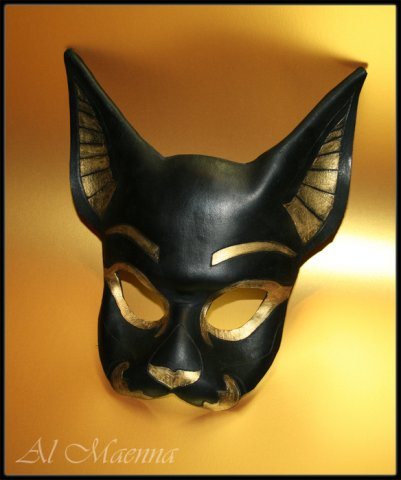

During the excavations in the city of Beni Hassan, archaeologists discovered an entire cat cemetery in which one hundred and eighty thousand cats had been laid to rest.
However, the large number of discovered mummies of cats can also be explained by their small size (it is easier to bury a cat than an ox).
The veneration of the cat did not end at the family level. It was nationwide. State laws protected cats as best they could.
For example, it was strictly forbidden to take cats out of the country. The Egyptians probably wanted to be a monopoly in the breeding of cats. 

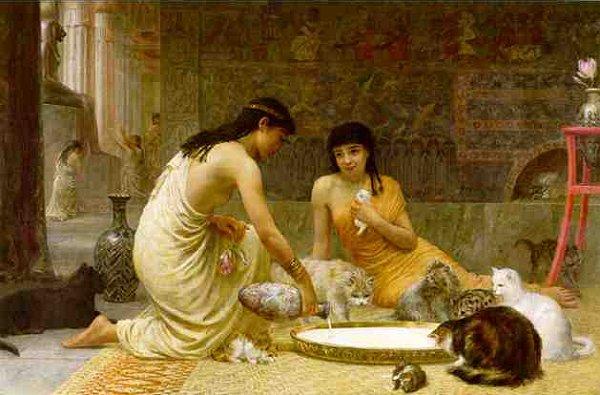

The Egyptians believed that one cat could bring them 28 kittens in 7 years. Even without mentioning its "sanctity," a fertile cat had a high material value. It was a symbol of an Egyptian's affluence.
This love of cats once turned against the Egyptians. Knowing that no Egyptian could kill a cat, the cunning Persians used it in their war with Egypt. They covered themselves with cats as shields, thanks to which they were victorious.


Some scholars argue that even before the heyday of Ancient Egyptian culture, there was a civilization whose scientific and technological achievements surpassed even modern levels.
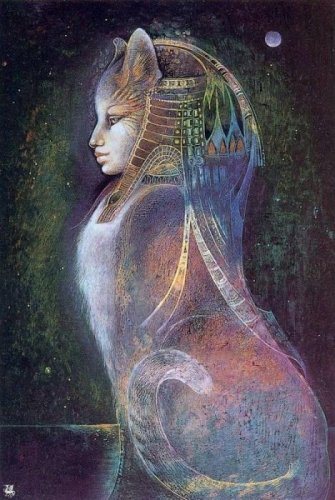

However, after natural disasters wiped out the great civilization, only legends, myths and prejudices remained from it... Probably, many people, like me, are interested in the question of origin of cats. Where did they come from? Where is their homeland? The answer to this question may be here in our memories of the past...
...945 B.C. A small boat sails on the calm Nile...
Two figures in white can be seen in the boat, standing side by side: a mature man, tall, trim. He holds on to the high bow of the boat with one hand, putting his other hand on the shoulder of his son, just a boy. They slowly approach the magnificent city.
"Father, tell me about this city and why we and thousands of other people are sailing here?" - "My son! We are sailing to the beautiful city of Bubastis, our capital, for the annual festival of the cat goddess Bast... Soft-hearted Bast is known for her miracles of healing. She is revered as the merry goddess of healing, music, happiness and joy. Thousands of pilgrims rush to the festival of Bubasis. A huge temple is erected in her honor, a water canal is next to the temple, and all the streets intersect at this holy place. I will teach you a prayer: "Oh, Bast, moon-faced, mighty healer, beloved by millions. Clear in your temple, open your doors before me, illuminate my soul with your light, penetrate deeply into my spirit, heal all my ailments..." Well, here we are, let us hurry to the temple."
The boy was deeply moved by the extraordinary sight that unfolded to him. The magnificent temple sparkles in the sun, everyone admires its snow-white columns, beautiful details, and laughter and cheers spread throughout the neighborhood. With songs and clapping the pilgrims ascend to the temple, shaking their rattles, a symbol of fecundity.
In Bubastis, Atum was considered the goddess' spouse, and his son was the formidable Mahesh, the god of storms and fury, worshipped in the form of, again, a lion. The goddess was also worshipped in other important cities of Lower Egypt - first of all, in Memphis, where she was identified with Sekhmet, and in Junu, where she was the daughter of Atum, the solar creator. It is known that the celebration of the cat goddess took place not only in Lower Egypt, but also in the south - in Thebes and Esna.
At the main entrance is a statue of the cat goddess, a goddess who had the power of the sun and moon and brought mental health. Bast is depicted as a woman with a cat's head, with kittens nestled at her feet...
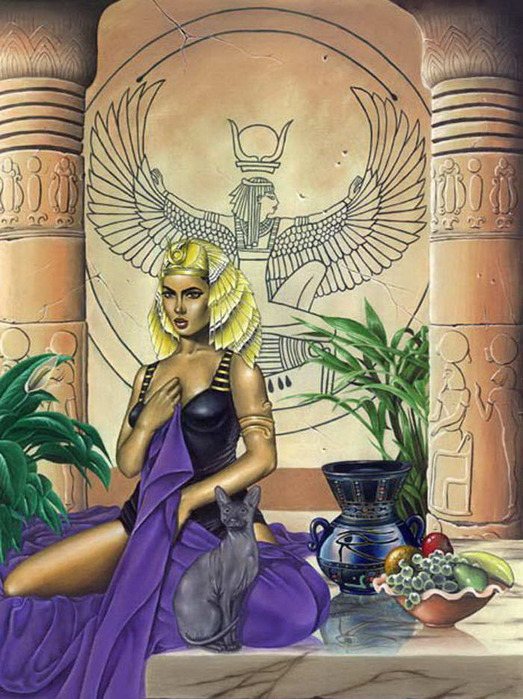

There are cat statuettes for sale all around, and the temple is home to many cats. An almost paramilitary caste of priests is organized to look after their welfare. The servants of Bast occupy positions of state.
The duties of the priests included healing, worship, and mummification of dead cats. Both men and women could be priests.
One of the main points of attraction was the colossal necropolis near the temple. Here they buried embalmed dead beloved cats, placing them in decorated sarcophagi along with toys and food, which, according to the ancient Egyptians, is necessary in the other world.
Pharaoh himself attended ceremonies in honor of the cat goddess. The ancient Greek historian Herodotus visited the temple at Bubastis in the 5th century BC, of which he wrote: "There is no temple so pleasing to the eye as this one at Bubastis."


The very first mentions of cats we find in the hieroglyphic writing of the ancient Egyptians. Lions and cats already had their own symbols with the designation "miu" or "mau". About 2.5 thousand years BC in the inscriptions of the pyramids of the V and VI dynasties of the pharaohs we find symbols that denote cats - it was the heyday of their cult.
The cat cult was so great that it lasted for more than 2 thousand years and was abolished only in 390 AD. Each city of ancient Egypt had its own totem, i.e., a guardian deity.
The cat had several cities where it was revered above other gods. May dog lovers forgive me, but although the dog was one of the Egyptians' favorite animals, it was never considered a deity.
And the Egyptian god Anubis, the guide of the souls of the dead, upon detailed study, had the head of a jackal after all. As for the cat, it was and is the real protector of man from invisible forces.


The ancient Egyptians, Tibetans, Tahitians and other peoples of the past, who had wisdom and knowledge, were well aware of this fact.
Anyone who wants to look into the history of ancient Egypt will immediately notice the special attention to the animals of the cat family.
An ancient legend says: "Shining Ra (the risen Sun) sailed on his solar shuttle across the heavens from east to west, making sure to avoid meeting with the serpent Apop (the darkness of ignorance), defeated later by Ra's daughter, the cat goddess Bast". It follows from all of the above that in the thinking of the Egyptians, the cat gods, and in particular Bast, had a very special meaning.
The Egyptians looked upon the cat not only as a beloved creature, but as a representative of a deity. And so they treated her with respect and reverence...
God Anubis.
...then what they received from it had a different quality, carrying more purity and light, it became for them a transmitter of divine energies.
П
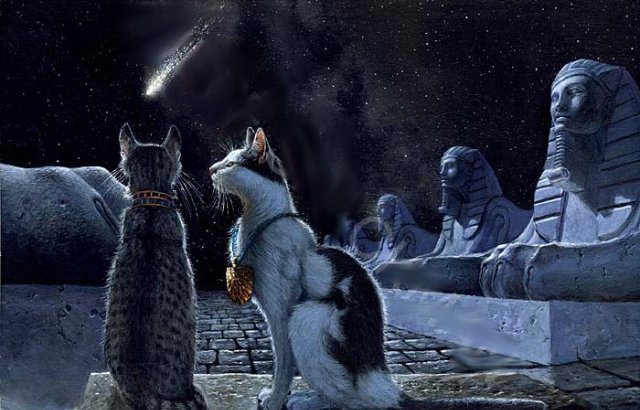

hese goddesses were regarded as guardians of the area and property, and the carved statuettes had a deep symbolic meaning. The Greeks called these sculptural images "sphinxes. That was the name of the immortal cat, which appeared in 1966 in Ontario, Canada, because of its resemblance to the ancient Egyptian statuettes and those cats that in those ancient times "guarded" the pyramids and the pharaohs.
The cat, associated with femininity and mystery, became a favorite inhabitant of temples and homes for the Egyptians.


The cat was so popular with the Egyptians that theophoric names, which included the name of the goddess Bastet, were widespread among the people of the Nile coast, for example Padibast - "He whom Bastet gave", Tashenubast - "Daughter of Bastet", Nakhtbastetru - "Strong Bastet against them", Ankhbastet - "Let Bastet live".
The oldest images of a cat in a religious context (amulets made of bone or faience) were found in the Badari necropolis and date back to the end of the Ancient Kingdom. Wearing them on the body provided permanent protection from any dangers...
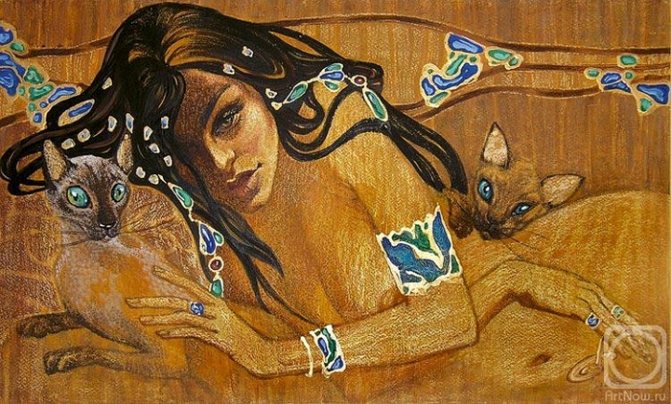

Later, cats appear on the so called. Magical wands from the Middle Kingdom era, made of hippopotamus bone and intended to protect the premises and especially the pregnant mistress of the house. On their surface there are images of strange demonic beings, spirits and animals, among which sometimes appears a cat - the exterminator of evil, personified in the form of snakes. In its front paws the cat often holds a knife designed to cut off the heads of its enemies, just like the great sun cat in Iunu.
Throughout the history of the pharaohs' Egypt, the cat has never exhausted its symbolic image as a protector, sometimes also associated with healing...
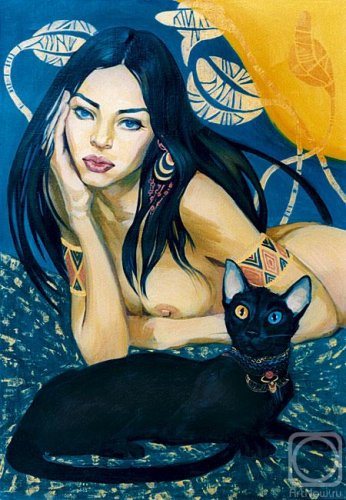

The cat in these cases is depicted with some lion-like features, which clearly indicates its formidable role and that as a peaceful inhabitant of the house and universal favorite coexisted in the image of goddess Bastet with the fierce lion-headed patroness of the king, whose name was first mentioned on a stone vessel from Saqqara, which preserved the name of the king of the II dynasty Hetepsehmui. The symbolic link between the cat and its formidable colleague, the lion, is present, centuries later, on the false doors in the Theban tombs of the XVIII dynasty lords Kenamon and Amenemhat Surer, which are guarded by cats symmetrically depicted above the doorway to the other world, the guards of the boundary between the two spaces. This role in Egyptian art was more often occupied by lions or hybrid creatures with a lion's body - sphinxes.
The consonance between the verbal designation of the cat (myit) and the name of Maat - the goddess of truth - may have led to the fact that in a number of later bronze statuettes of sacred cats the image of the goddess becomes part of the animal necklace, and her sacred feather becomes a symbol, whose shape was used to style the fine hair inside the cat's ears. Images of cats are often found on ritual objects associated with the various hypostases of Hathor, in particular the sistras, where she appears as the incarnation of the Heliopolis goddess Nebethepet, associated with the sexual energy of the creator god, transformed into a goddess. In this context, the cat clearly appears as a symbol of fertility, sexuality and attractiveness.
The connection between the cat and the lioness, two aspects of the formidable and predictable nature of the female deity, was emphasized in every possible way.
Thus, one of the statuettes depicts the lion-headed Sekhmet sitting on a throne and placing her feet on the prostrate figures of captive foreigners, while the cat Bastet sat on their feet. Bastet's childbearing functions, often surrounded by kittens, and her sexual power were the keys by which the goddess became the appeasing and affectionate mother of the king, the protector of those lost in the night and, in general, the "reverse" of Sekhmet, echoing the words of the famous "Teachings of Ankhshonk": "When a man smells myrrh, his wife before him is like a cat. When a man is in misery, his wife is like a lioness before him. The same Ankhsheshonk, probably hinting that the cat's character is unpredictable and its transformation into Sekhmet is very quick, reminds: "Do not laugh at the cat".
The cat cult that existed in Egypt touched other countries as well. So, traces of its influence can be found in Gaul, in particular in Toulouse, where amulets, statuettes, musical instruments - sistras - have been found depicting cats (local archaeological finds are most likely dated to the 1st century BC), and in Britain: in Badbury, Gadsedje, All Saints and Danbury archaeologists have unearthed mass graves of cats.


Egyptian artists depicted hundreds of cats on tombstones and papyrus. They sculpted them in bronze, gold, stone and wood, made them in clay, and carved them in ivory. Young Egyptian women wore amulets with images of cats, which were called "duckats" and were a symbol of fertility. Girls prayed to the gods for the fulfillment of a desire to have as many children as the number of kittens depicted on their amulet.
A cat is an amazing creature. There is no animal with a more complex character and such a contradictory and rich history. At first it was worshipped as a deity, then it was seen as a servant of the devil, and now it is an idol again.
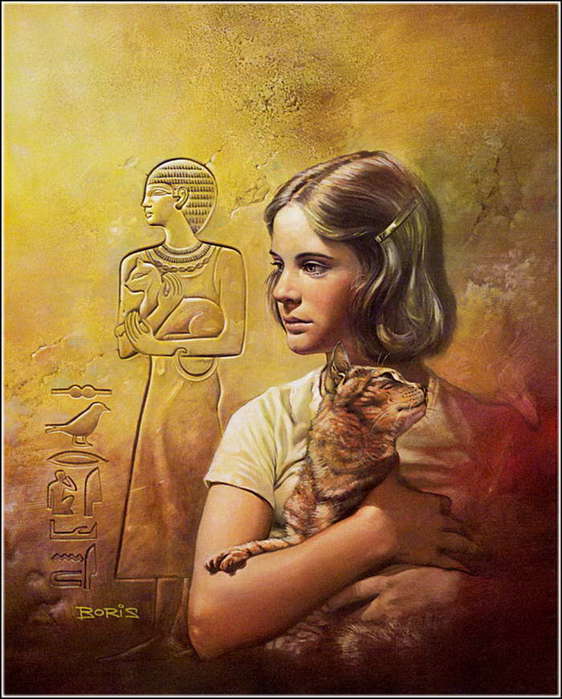

In terms of numbers, the cat will soon become the most popular pet on Earth. Even the laziest domestic cat is a born hunter. "I am a cat that walks by itself." With these words Kipling immortalized the cat's inherent spirit of independence. She may live in our house, accept our way of life, but she allowed herself to be tamed only on her own terms. And was the domestic cat really domesticated?
The Egyptian Mau (Mao) is considered the oldest natural breed. It has every right to be considered a direct descendant of the first domesticated cats of ancient Egypt.


In Egypt, man and cat are linked by longstanding ties. She was worshipped as a goddess even before she was domesticated. For more than a millennium she was a national deity. Cat worship goes back even further than the time of the sphinxes with their human head and lion's torso.
P.S.: As I just adore cats and I like very much everything connected with the culture of Ancient Egypt, as one of the most mysterious countries of the Ancient world, I decided, that in my diary there will be many cats, various, to any taste and many Egyptian themes. So, don't mind me for a little monotony of themes... But that's for now... as my interests are not limited to cats and Egypt. But, unfortunately, not enough time for everything...
A series of posts "History of cat:
Part 1 - The Story of the Origin of the Little Wonder Part 2 - The Cult of the Cat in Ancient Egypt. Goddess Bastet. Part 3 - The divine cats in ancient culture and their mistresses Part 4 - The cult of the cat in Mesopotamia Part 5 - History of cats in Britain: success - tragedy - worship... Part 6 - History of cats in the East: no more ancient?
The Cult of the Cat series of posts:
Part 1 - The Cult of the Cat in Ancient Egypt. Goddess Bastet. Part 2 - Divine cats in ancient culture and their mistresses Part 3 - The cat cult in the Mesopotamia Part 4 - History of cats in Great Britain: success - tragedy - worship... Part 5 - History of cats in the East: no more ancient?
The distinctive features of tattoos Egypt
More than four thousand years ago the art of tattooing was already known in Egypt. Originally this privilege was enjoyed by the weaker sex, but then the art of tattooing became available for men as well.
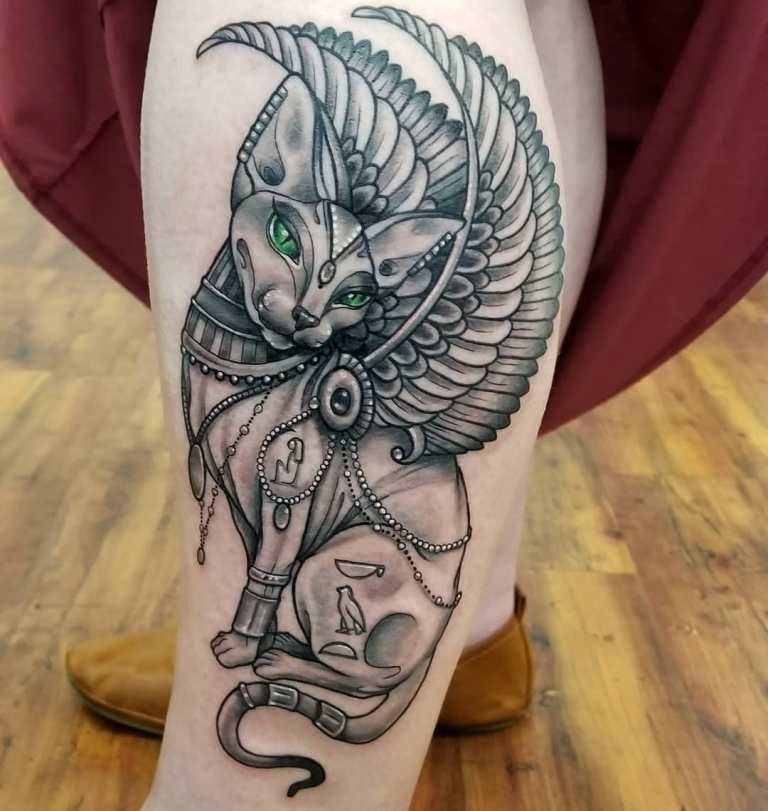

Tattoos had a sacred significance to the Egyptians, as with dots and lines they expressed energy flows. Today images of this type are not as popular as animal body drawings and the Egyptian style of graphics, which stands out among other types.
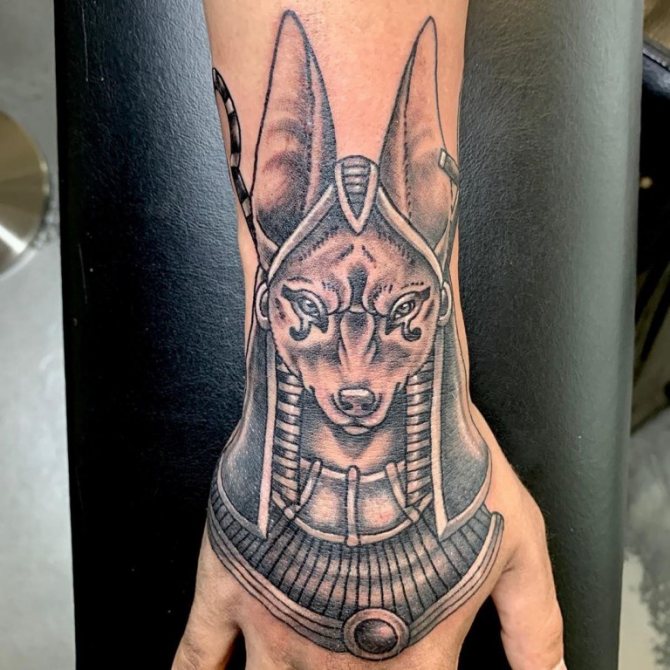

Distinctive features of Egyptian body art are the presence of recognizable symbols such as:
- sculptures, structures, objects of circumambulation;
- portraits of rulers, mummies;
- cats, birds, hooved animals;
- feathers, lotuses;
- Egyptian symbols;
- Deities of Egypt.

